Spinal diseases are growing youthful every year.One of the most common remains of osteochondrosis, which has only recently been considered exclusively age-related disease.If it affects the cervical spine, neck, arms, arms and quite severe pain, it can significantly reduce the quality of life.This is often accompanied by many other disorders and, if not left, causes intervertebral hernia, which requires a large volume of surgery.Therefore, it is important to name cervical osteochondrosis as early as possible and begin treatment according to the situation.
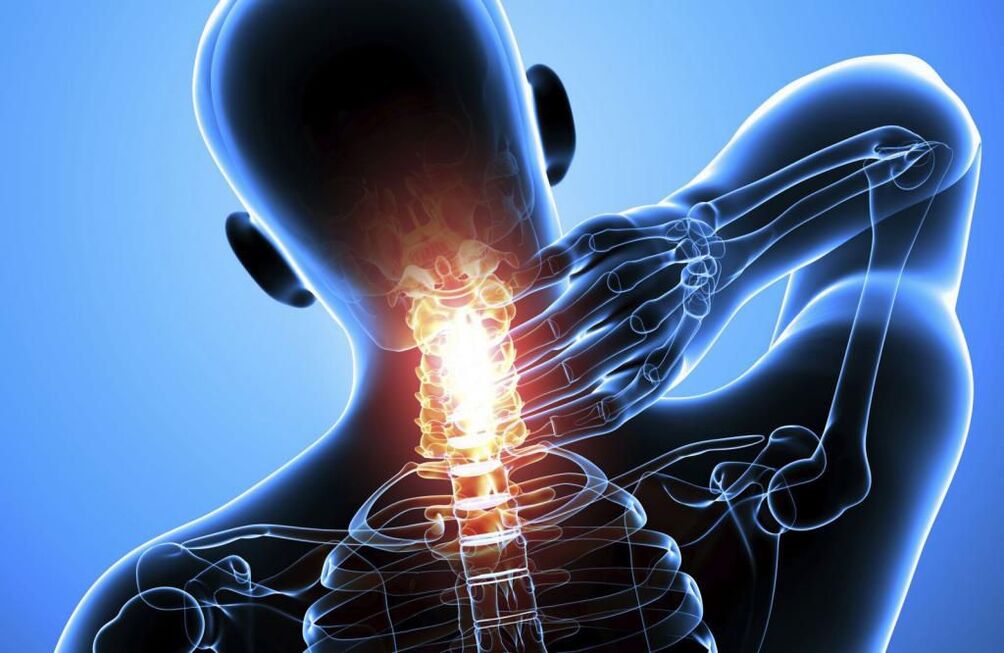
Symptoms of osteochondrosis of the cervical spine
Cervical spine osteochondrosis is a disease in which degenerative changes in the intervertebral discs occur.Initially, the discs that are cartilage rings that contain jelly -like content are dehydrated.It is most often the result of a sedentary lifestyle, prolonged work on the computer, poor posture, neck injuries and many other factors.
This results in a decrease in the strength of the collagen fibers that form the Annulus fibrosus disk.As a result, its thickness gradually decreases, leading to the development of symptoms characteristic of cervical osteochondrosis:
- Neck pain with varying degrees of intensity;
- Headache, dizziness, loss of consciousness caused by disruption of cervical spine arteries, which directly pass through the spine, that is, the development of spine artery syndrome;
- Blood pressure fluctuations;
- Radical syndrome caused by spinal roots, which is accompanied by irradiation of pain from the neck to the arm, the hands and fingers, the shoulders, the sensory disorders in these areas, the appearance of shrubs, the bushes, the bushes, etc.;
- Decreased neck movement range, pain appearance or intensification when performing certain movements;
- Increased fatigue, decreased performance;
- Tinnitus, impaired visual severity, development of ENT pathologies that are difficult to treat.
There are 7 spines in the cervical spine.Most often, osteochondrosis affects the discs between the 5th and 6th, as well as the 6th and 7th vertebrates.
In such situations you should contact a neurologist who determines the MRI.The results of this study can accurately identify osteochondrosis, even at an early stage of development and select treatment.
The stages of development
In general, there are 4 stages of development of osteochondrosis:
- First Class - Abnormal changes have just begun in the intervertebral disk, so the symptoms are mild and only observed from time to time.Treatment in such situations will be as effective as possible.
- 2nd degree - Changes in discs become more pronounced, causing pain in the neck, which occurs and intensifies when performing head movements.
- Class 3 - Pain is almost constant and can be complicated by the development of spine artery syndrome, as well as protrusion and intervertebral hernia.
- 4th degree - The disc is so devastated that the ability to move into the affected spinal movement segment is almost completely excluded.In this case, severe pain is observed, radical syndrome often develops and the arteries of one or both spine are cut, causing the characteristic symptoms.
Treatment of cervical osteochondrosis
Thus, the tactics for treating cervical osteochondrosis depend on the severity of degenerative changes in the intervertebral discs, the age of the patient and its individual characteristics.Therefore, it always develops separately for each patient, but is always aimed at solving the following problems:
- Eliminate unpleasant symptoms that worsen the quality of life of the patient;
- Improving the quality of blood circulation in the neck;
- Improvement of metabolic processes in the affected side;
- Elimination of the causes of degenerative-dystrophic changes of intervertebral discs;
- Reduce the risk of developing osteochondrosis complications, ie protrusion, intervertebral hernia, spondylosis, etc.
In general, each stage of disease development indicates the use of different therapeutic measures.If at the first stage it is enough to adjust your lifestyle and engage in exercise therapy, then the 2nd stage will require a wider impact, additional medications, manual therapy sessions, use of orthopedic devices, etc.
But patients should realize that it is impossible to achieve the opposite regression of degenerative-dystrophic changes that have already occurred, especially if 2 or more osteochondrosis is diagnosed.In such situations, treatment is aimed at improving the patient's well -being and stopping further progression of the disease.Sometimes the situation can only be completely remedied in the first stage of osteochondrosis, but at this stage of development, the pathology is diagnosed extremely rarely, as patients can only discomfort in the neck and do not consult a physician.
In more severe cases, treating cervical spine osteochondrosis will be even more difficult and longer.In any case, it is carried out under the supervision of a neurologist by periodic further examinations and adjustments of therapy, depending on the patient's well -being.
Correcting a lifestyle
All patients with cervical osteochondrosis are advised to make some changes to the lifestyle.In each case, these recommendations differ in the characteristics of a person's professional activity and many other human characteristics.
Most are advised to increase their physical activity and dismiss them at least every hour to warm up if they are sitting.In cases where the patient is actively involved in sports, it is advisable to reduce the load on the cervical spine.Thus, it will be shown to abandon jogging, sports, weightlifting and wrestling.
People with overweight are additionally recommended to take measures to reduce it, as well as adjust their diet.When osteochondrosis has already occurred, it is important that the diet meet the daily needs of the body as fully as possible.Therefore, it is worth giving up fast food and semi -finished products and approaching your diet rational.This means it's worth creating a menu so that half of the diet is made up of vegetables and fruits, and it also contains a sufficient amount of protein.
Treatment of cervical osteochondrosis drug
Drug therapy is mainly aimed at eliminating unpleasant symptoms of osteochondrosis of the cervical spine.Usually it is difficult and involves the use of drugs of different groups, each of which solves specific problems.Therefore, it also develops separately for each patient.
Nsaids
Nonsteroidal anti -inflammatory agents or NSAIDs are a wide group of medications that have not only anti -inflammatory but also analgesic properties.They are available in various dosage forms, including tablets, capsules, ointments, gels and creams, as well as solutions for intramuscular administration.NSAIDs should only be used for demand, that is, when severe neck pain occurs.
For severe pain, NSAIDs can be administered intramuscularly.
The disadvantage of the oral drug from the nsaid group is their irritating effect on the mucous membrane of the stomach and duodenum.This can lead to worsening diseases of these organs, in particular gastritis and peptic ulcers.To reduce such risks, proton pump inhibitors are prescribed with them.
There are drugs that have a more gentle effect on the gastrointestinal tract, which is why they are widely prescribed for osteochondrosis to relieve pain and inflammation.Also, more advanced drugs have been developed, which are characterized by selective effects that are also often prescribed for osteochondrosis, but they are more expensive and not available to all patients.
Corticosteroids and injections (blockades)
Corticosteroids are hormonal medications that are prescribed for patients with severe inflammatory processes.They can lead to many undesirable consequences for long -term use, so they are in the most difficult cases in short courses.The use of injection solutions is usually indicated, as this method is easier to tolerate by these medications by the body and is unlikely to cause side effects.
Corticosteroids are often used with local anesthetics in the performance of blockages, that is, very severe pain for rapid release, with the prepared mixture in special points, along the spinal nerves.The procedure requires some skills and lightness and can therefore be performed only by specially trained medical workers in medical institutions.Otherwise, the likelihood of developing undesirable consequences and complications is very high.
It is advisable to make blocks no more than 4 times a year.
Muscle calmers
Muscle calmers are a group of drugs used to eliminate reflex muscle spasms caused by an acute inflammatory process.It is often found in cervical osteochondrosis and causes severe pain in the neck, which exacerbates the situation.
Vitamins
Because osteochondrosis creates important prerequisites for compression of spinal roots, it is often indicated in the intake of vitamins that contain B vitamins primarily.They are directly involved in the transmission of nerve impulses, which is especially important in the development of radicular syndrome.
Chondroprotectors
Chondroprotectors are a drug around which there are many controversial.They are based on substances used by the body that restore damaged cartilage tissue, which determines the instructions for use in cervical osteochondrosis.At the same time, there is no convincing evidence of their effectiveness in advanced forms of the disease.In the early stages of osteochondrosis, they actually have a positive effect on the condition of the intervertebral discs, which results in improved patient well -being.Later, they can only delay further progression of degenerative changes in the intervertebral discs.
Chondroprotectors are produced in the form of powders, solutions, capsules, topical use for products, as well as for intramuscular administration solutions.The largest positive effect from the latter was observed.
Current products
These are precisely the drugs available in the form of gel, cream or ointments that patients often start to use when signs of cervical osteochondrosis appear.They have various effects, including anti -inflammatory, analgesic, warming or, conversely, cooling and local irritants.
Often these products contain NSAIDs, so they help reduce pain, but are effective mainly in the early stages of osteochondrosis.Also, the components of such drugs can be menthol, hot pepper extract, snake or bee poison.
Local irritants act on the principle of irritation of the nerve endings of the skin, which reduces the severity of pain and increases blood flow to the application area.But such remedies are effective only at the initial stage of development of cervical osteochondrosis.
Preparations to improve microcirculation
In this group, drugs are used to improve the quality of blood flow, which is especially necessary for spine artery syndrome.Many medicines have a vasodilatory effect, which improves brain nutrition and promotes the elimination of tinnitus, headache and dizziness.But without effectively eliminating pressure factors on the spine artery, such treatment will only give us a temporary result.
Exercise therapy
Physical therapy is the basis for the treatment of cervical spine osteochondrosis.Today, there are many different and generally accepted methods of exercise therapy for cervical osteochondrosis, but patients need to realize that there are no universal exercises.Exercises should be chosen by a specialist on an individual basis, given that not only the development of degenerative-dystrophic changes, but also the patient's age, the nature of the existing congenital diseases, the presence of radicular syndrome, or the contraction of the spine arteries.Thus, different exercises can be noted for the same patients who have about the same changes in intervertebral discs.
In general, physical therapy has the following goals:
- Strengthening the muscles of the neck and upper shoulder;
- Activate blood flow to the affected side, which will help restore the fiber rings of the intervertebral discs;
- Normalize muscle tone.
Exercise therapy is essential every day.Initially, it is best to attend special groups or work individually with an exercise therapy instructor.This will allow you to master 100% of each of the suggested exercises to make it possible to maximize it.A specialist will help you select the optimal load and develop a program to increase it, taking into account the level of physical development of the patient.
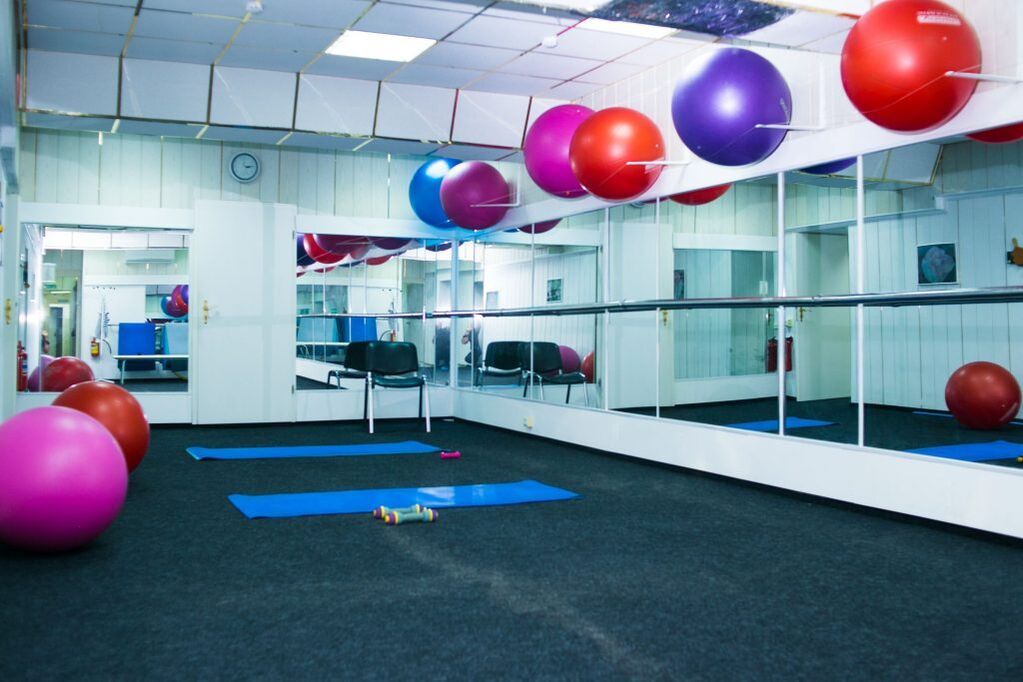
In the future, patients can practice exercise therapy independently at home.At the same time, it is important to approach it with full responsibility, perform exercises slowly, accelerate and comfortable.But if the pain arises at any time during the exercise, you should immediately stop performing the exercises, causing her appearance and consulting your doctor to identify the causes and correct the exercise therapy program for cervical osteochondrosis.
When doing exercise therapy, it is forbidden to make unexpected, strong movements, overturn your head, or perform exercises with pain.In such situations, instead of gaining the expected benefits, there is a high risk of exacerbation of existing disks.
Swimming has a very positive effect on the condition of the spine.This is exactly the kind of sport that does not imply stress on the discs, but actively involves the back and neck muscles.As a result, the muscle corset is effectively enhanced, acting as a natural spine support.Therefore, if possible, patients are advised to visit the pool 2-3 times a week.
Manual therapy for cervical osteochondrosis
Manual therapy for cervical osteochondrosis is one of the most effective methods as it allows you to affect not only the muscles and soft tissues, but also the spine.But it is very important to get a liability approach when choosing a chiropractor, as improper or very strong influence can lead to a deterioration of the patient's condition and even complications.Such a specialist should not only have a higher medical education and manual therapy practice license, but also have a good understanding of anatomy and osteochondrosis characteristics and have sufficient experience.
Do not capture manual therapy and therapeutic massage.The differences between this type of manual therapy are important because therapeutic massage includes only soft tissues, and during manual therapy the doctor also works on the spine.
So each manual therapy session begins with a blow, allowing you to prepare your skin for more active further effects.In the future, garbage, dirt and weakening techniques are used, allowing you to activate blood flow collar, neck and upper back.As soon as the skin and muscles are warmed enough and the patient relaxes, the doctor begins to mobilize and manipulate the technique.They imply alternation with ostilational movements, pushing the most pronounced movement restrictions, leading to the mobility of the spine and the elimination of functional blocks.
Thus, thanks to qualified manual therapy, it is possible:
- Normalize the spine position, thereby eliminating increased pressure on the intervertebral discs and creating conditions favorable for their recovery;
- Eliminate cervical osteochondrosis and its complications;
- Move over -relaxed muscles to a normal tone and relax the spasmic muscles;
- Increased neck mobility;
- Eliminate pressure on the spine arteries and thus normalize blood flow to the brain;
- The elimination of spinal roots compression and thus normalizes bioelectric impulses for the organs whose responsibility is and reduces pain.
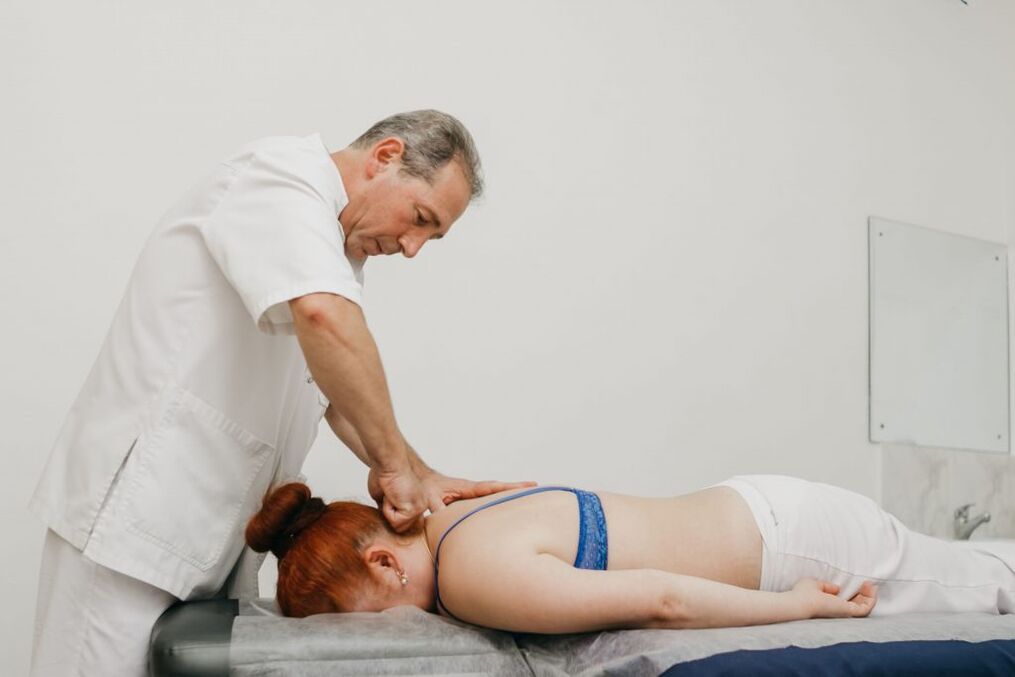
It is especially worthwhile to emphasize the author's guide therapy method.It involves the use of special, patented impact techniques, which will enable the outcome after the first session, not only on the part of the osteochondrosis affected neck, but also on the entire body.As a result, not only the pain and other symptoms of the disease disappear, but also the functioning of all organs also improves and the immune system is strengthened.Second and subsequent sessions enhance the positive effect and enhance it, which guarantees that if other medical recommendations are followed, the remission period will last as long as possible.
Massage itself
To improve their well -being, patients can periodically perform neck self -employment to relieve fatigue and reduce pain.To do this, sit in a comfortable position and try to relax your neck muscles.Then perform stroke movements with the palms, gradually moving to a circular trash by pressing the shoulder area.All movements are made from the spine without sudden and strong pressure.In this case, you can use local anti -inflammatory remedies recommended by your doctor.
Physiotherapeutic treatment
Physiotherapy is indicated outside the acute inflammatory process.This allows you to enhance the results of the treatment achieved and further improve the patient's condition.Typically, the course of 10-15 procedures is prescribed, which is selected separately for each patient.It could be:
- Electrophoresis - involves the use of electric current to ensure deeper penetration of the specified medicines.
- Magnetotherapy - Helps activate blood circulation in the area of influence and stimulates the course of metabolic processes.In addition, magnetic therapy sessions have an analgesic effect and help eliminate swelling.
- Laser therapy has anti -inflammatory, vasodilatory effects that reduce the severity of pain.
- Ultrasound therapy is a method of physiotherapy based on the positive effect of ultrasound waves on the body.They help reduce the sensitivity of nerve endings and also have anti -inflammatory and analgesic effects.
- Diadinamic currents - Procedures reduce pain, improve tissue nutrition, have a positive effect on muscles and help eliminate inflammation.
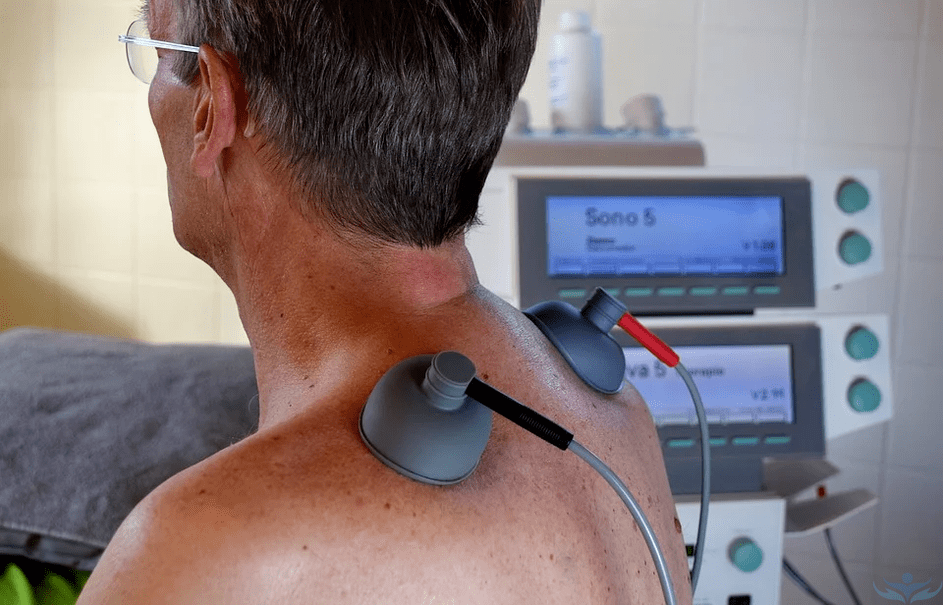
Traction therapy
When the vertebrates are assembled due to the flattening of the intervertebral discs, the Glisson loop is indicated by traction therapy.The essence of the method is the use of an accurate adjustable load of the cervical spine using a special device that fixes itself and has a load on the opposite side.Such procedures help to increase the distance between the vertebrates, which reduces the pressure on the discs and creates favorable conditions for their recovery.But such therapy can only be determined by your doctor.
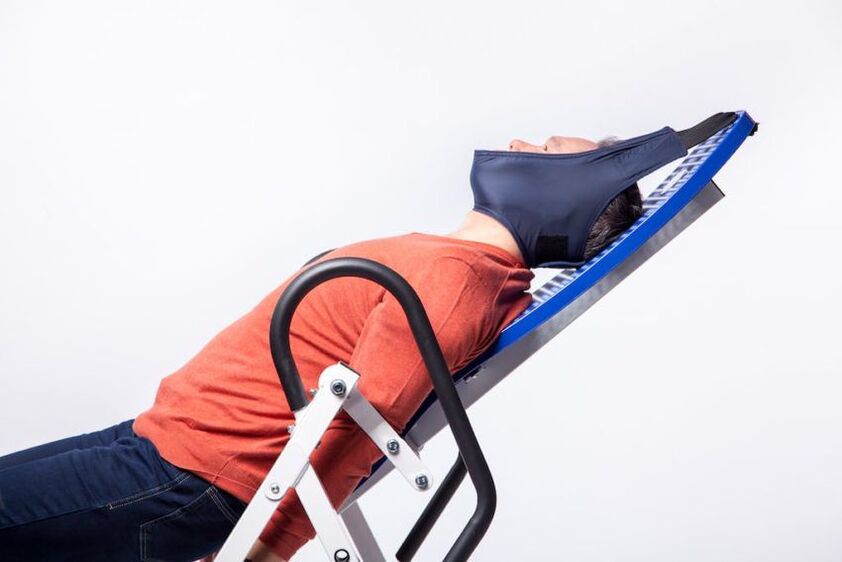
Needle Applicant
IPlicator is a simple, affordable remedy for reflexology in the neck area.It can be a plate of spikes that should be placed under the neck, or a similar device, but in the form of a roller.Thanks to the extinguishing of the thorn, the skin receptors are irritated, causing more active blood flow to the affected side.
Some patients indicate reduced neck pain after using the applicator, as well as increased performance, improvement of sleep and restoring neck mobility.But if you have skin damage to the affected side or cardiovascular disease, you should not use a needle applicator.
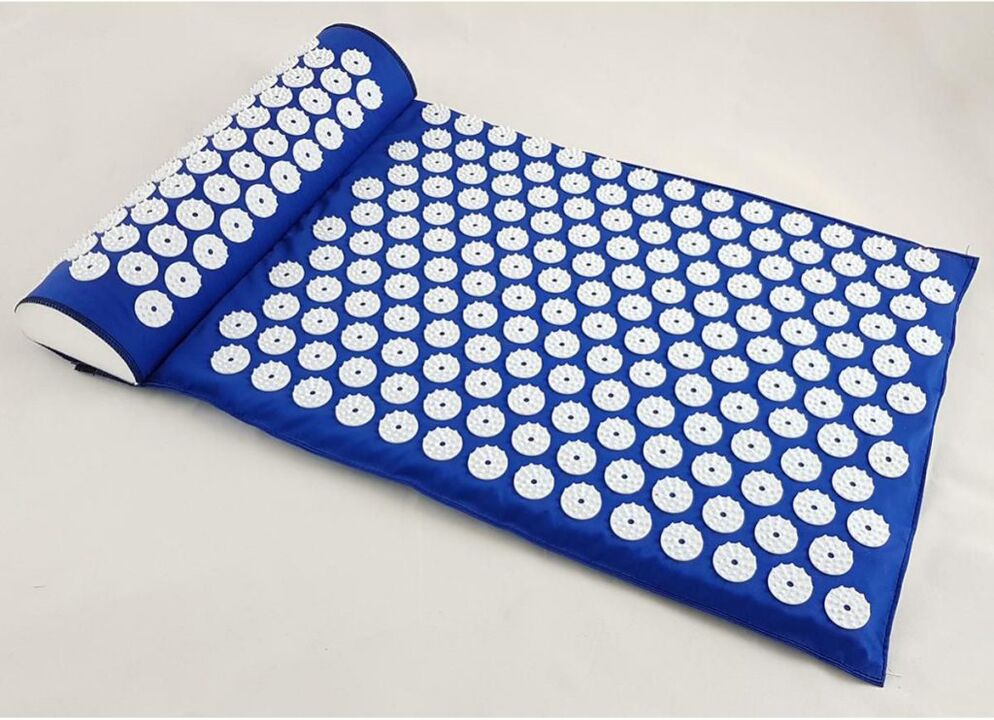
Orthopedic devices
To reduce cervical spine load, it is advisable to replace the mattress and pillow in orthopedic conditions, as sleeping on an unpleasant pillow causes additional contraction of the spine arteries and nerve products during sleep.Orthopedic products are free from these shortcomings and ensure the physiologically correct position of the spine throughout the length, thereby reducing the rate of progression of existing osteochondrosis.
But it is important to choose the right pillow and the mattress so that they match the individual characteristics of the patient and contain appropriate filling.Thanks to them, it will also be possible to improve sleep quality and wake up in the morning cheerfully and relax.
Also, some patients are recommended to wear a chant collar.It is a removable orthopedic device that allows you to fix the neck and significantly reduce the cervical spine, for example, when working on a computer or injury.The collar is located before the expected load on the neck, but it should be removed during sleep and rest.They differ in design, height, quality of fixation, so only the attending physician can choose optimal.
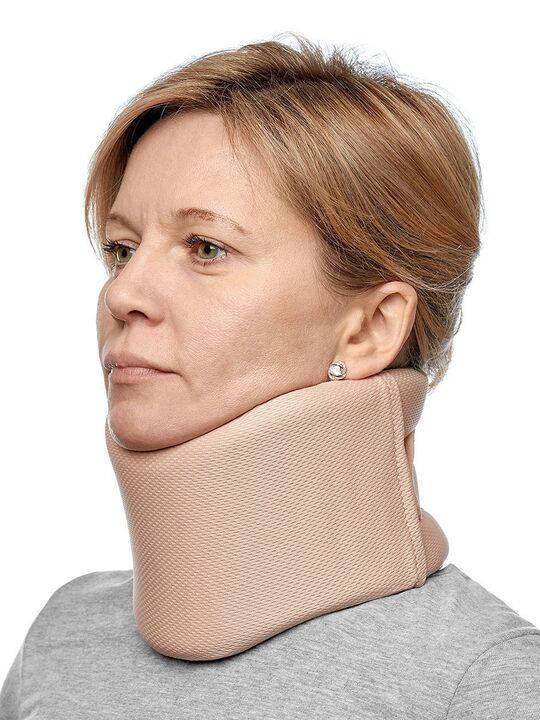
Thus, cervical osteochondrosis can be quite long and difficult.You need to prepare for this, as there is no other way to stop the development of intervertebral disc changes, prevent complications and the need for surgery.In most cases, patients' condition is improved in the first weeks of treatment.At the same time, it is important not to contact the medication itself, but to contact a neurologist, as only a qualified specialist will be able to determine the degree of osteochondrosis and select the most appropriate treatment for a particular patient.

















































